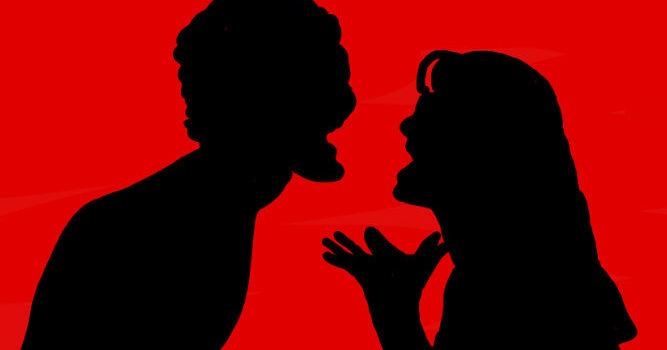

This article is an excerpt from the Shortform book guide to "The Anatomy of Peace" by The Arbinger Institute. Shortform has the world's best summaries and analyses of books you should be reading.
Like this article? Sign up for a free trial here .
What’s your way of handling conflict? What do you think is the main reason that trivial conflicts escalate into full-blown arguments?
According to the Arbinger Institute, the author of The Anatomy of Peace, some people have difficulty resolving conflict peacefully and effectively because they adopt what they call a “combative mindset.” There are three elements of the combative mindset: collusion, self-betrayal, and justification.
In this article, we’ll examine how the combative mindset causes failures in our approach to conflict.
Understanding Conflict
When it comes to handling conflict, it doesn’t so much matter if you are right or wrong. You can be right in principle, the Institute says, but if your mindset is wrong, it doesn’t practically matter that your position is technically correct. Arbinger notes that while there may be a lot we disagree with others about, the way we disagree affects how we see each other going forward.
Collusion
When we embody the combative mindset, we see others as objects and obstacles rather than people. We ignore their needs, circumstances, and feelings, and approach them dishonestly, focusing only on what we want from them. The result is that we constantly treat the other party as if they were less than human and are shocked and offended when they respond in kind. The Arbinger Institute calls this mutual mistreatment-and-response cycle “collusion.”
- When we collude, we jointly create a problem that’s bigger than it should be, to share our anger and frustration in a way that hurts our enemy just like they’re hurting us. We start to provoke, demean, and infuriate them, treating them in ways that encourage them to continue making us unhappy.
- Furthermore, we intentionally avoid the other party and seek support elsewhere, making it impossible to even discuss coming to an agreement. We complain to people we know will take our side, poisoning our friends against each other, our partners against our children, and our coworkers against our bosses. We increase the scope of the conflict instead of reducing it.
| Collusion: What About Inequality? The idea that we “collude” with our “enemies” in creating our own unhappiness is a foundational idea in The Anatomy of Peace. Studies support the argument that the way we interpret and respond to negative events or interactions often makes bad situations worse. However, there are limitations to this argument that The Arbinger Institute doesn’t address. In fact, some critics claim that the Institute applies this principle beyond its appropriate scope. For example, they argue that it should not be applied to situations in which there is a large power difference—something that Arbinger tries to do in the book. In describing collusion, Arbinger gives an example in which Yusuf and Benjamin Arrig, a Black professor, witness an August 1967 clash between Black protesters and police. Arrig claims that both the protesters and the police are fighting oppression. Arrig explains that the way these protesters embody their cause ignores the needs and safety of the police officers, bystanders, and other residents, and thus is arguably oppressive too. Their behavior forces the police to respond aggressively, inciting further oppressive treatment. “The desire for tear gas is visible on both sides,” he says, because being gassed by the police helps protesters justify objectifying the officers and choosing violence. In other words, they’re colluding with the officers to make the situation worse. Arrig argues that even when there’s a power imbalance, the oppressed have a responsibility to ensure that they don’t “become oppressors themselves.” In reference to this passage from the book, Rev. Hannah Bonner explains that when a systematically oppressed minority is being dehumanized and mistreated, it’s not valid to argue that they resist that oppression only because they’re “creating a false reality” in which resistance is justified. Being routinely abused itself justifies resistance, she says, and for the group which holds greater power—or perpetuates the abuse—to claim that the oppressed minority’s resistance constitutes collusion is victim-blaming. It’s not the black protesters’ fault that the system that oppresses them doesn’t afford them more “collaborative” means of advocating for their rights, and it’s inappropriate to blame them for the police’s violent response to their advocacy. |
Self-Betrayal
As we’ve discussed, it’s impossible for us to resolve a conflict if we’re not seeing others as people. This is the core issue of the combative mindset, according to Arbinger: We know people aren’t objects, but we choose to treat them as objects anyway. We lie to ourselves and ignore the truth of the situation. The Institute tells us that this mindset is a result of self-betrayal. Understanding self-betrayal helps us identify the ways in which we are feeding our conflicts.
Arbinger explains that the concept of self-betrayal relies on understanding that humans have certain innate desires. Evolutionary scientists often argue that the success of our species is largely the result of a desire to help, protect, and care for one another. According to Arbinger, when we choose to behave in a way that doesn’t align with this desire, we self-betray.
Generally, Arbinger says, we make the choice to betray ourselves because we think it’ll cost us less time, energy, or effort—or because we think honoring our desire to do the right thing will lead to some discomfort we’d rather avoid. Maybe we choose not to help when we know we could, or we don’t speak up for ourselves or others when we feel we should.
(Shortform note: In many ways, self-betrayal equates to going against our conscience: acting in a way that doesn’t align with what we know is right. In Stephen R. Covey’s book First Things First, he emphasizes the importance of living according to your conscience. The more you excuse acting against your principles, the deeper you bury your integrity beneath a pile of rationalizations and justifications. In order to live with integrity, he says, you must pay attention to your conscience, as well as the way you respond to its messages. Your conscience will always point you toward your greatest quality of life, by recommending genuine, wholehearted actions that support your principles.)
Justification
The authors explain that when we betray ourselves, the choice we’ve made doesn’t feel right to us, so we seek to justify it. It’s uncomfortable to know we’ve done something we don’t believe in, so we convince ourselves that the betrayal was unavoidable—even when that’s not true.
The Institute lists three ways in which we usually justify our self-betrayals:
- By changing the way we see ourselves
- By changing the way we see others
- By creating a false reality in which our choice was right, necessary, or inevitable
(Shortform note: We may justify unethical behavior in dozens of different ways that aren’t logically consistent or reasonable. Arbinger focuses primarily on self-serving justifications—in which we rationalize our behavior as being “not that bad,” or twist the circumstances in a way that allows us to feel morally justified. We want to believe that we’re still good people, or that it’s okay if we do wrong “once in a while.” The trouble is, when we betray our conscience we don’t feel we can believe either of those things anymore, so we justify until we can—even if the justification is, “well, maybe I’m not a good person!”)
For example, Steve is watching football late on a Sunday night when he sees a notification on his phone. It’s a missed call from his mother, and he suddenly realizes it’s Mother’s Day. He knows he should call her back right away, but the game’s in full swing and he doesn’t want to miss it. He tucks the phone under a couch cushion and forgets about it. When he calls his mother the next day and finds she’s upset with him, he gets defensive and frustrated.
Let’s take a look at what might have happened in Steve’s head as he worked to justify his behavior:
- Steve changes the way he sees his mom by telling himself that…
- She’s unreasonable; it was just a phone call, and he calls her every week anyway.
- She’s annoying and clingy; he’s an adult, and she should let him do his own thing.
- She thinks she should get a trophy for having a kid.
- Steve changes the way he sees himself by telling himself that…
- I never have any time to myself; someone always wants something from me.
- I’m forgetful, and that’s not my fault.
- I’m just a bad son; I can’t live up to my mom’s expectations.
- Steve changes the way he sees the world by telling himself that…
- It’s full of stupid obligations that only exist to stress him out.
- It’s unfair that he never gets to have an evening to himself.
- It’s like the world conspires to make sure he doesn’t have any fun.
- As a result, Steve feels…
- Resentful and defensive
- Frustrated and bitter
- Justified in his behavior
Each time we justify our self-betrayal, our perspective shifts, making it more likely that we’ll justify again. The more you justify, Arbinger says, the more sure you are that you’re right, and the more likely it is that you’re actually mistaken. Notice that if you honor your true desires, you don’t have to twist the world into a place that justifies betraying them.
(Shortform note: When you justify in any of the three ways noted above, you become susceptible to confirmation bias. This is a tendency to seek evidence that supports what you already believe—in this case, your justification—and to ignore evidence to the contrary. You can’t afford to see your justifications disproved, so you do everything you can to avoid reality and “confirm” your point of view—which can lead to embracing broad stereotypes, refusing to give second chances, or attacking those you disagree with before they can argue their point.)

———End of Preview———
Like what you just read? Read the rest of the world's best book summary and analysis of The Arbinger Institute's "The Anatomy of Peace" at Shortform .
Here's what you'll find in our full The Anatomy of Peace summary :
- How we perpetuate conflict by misunderstanding its cause and acting inappropriately as a result
- What causes conflict, how we make it worse, and how we invite mistreatment
- The steps we can take to escape the combative mindset and set aside our biases






